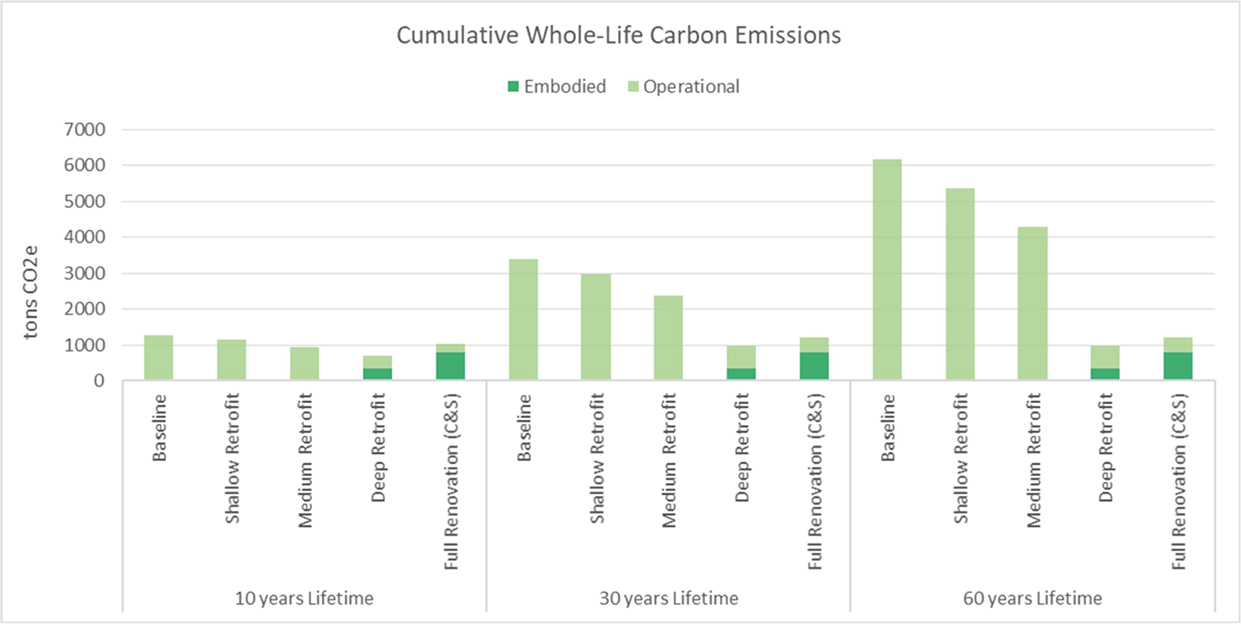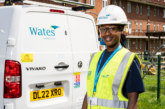
Net zero technology firm, IES, has collaborated with Dublin City Council on a Digital Twin project to identify how Dublin’s social housing stock can be decarbonised in the most efficient manner in terms of both operational energy and embodied energy.
Using its world-leading digital twin technology, IES carried out modelling of three residential blocks located on Lower Dominick Street. It assessed the full carbon impact and efficiency of four renovation strategies, over three different time periods, to regenerate the vacant buildings built in 1962. The strategies align with the council’s climate targets for 2030, 2050 and beyond.
The project took a whole-life carbon approach, taking into account both embodied and operational carbon. Consideration of embodied carbon, which is the emissions associated with construction and materials throughout the whole life-cycle of a building, is a critical part of sustainable building analysis that is often overlooked.
A digital twin is a virtual replica of a building, which uses real data, and physics-based simulations to behave as it would in real life. Powered by dynamic simulation modelling software, the digital twin models were used to identify which strategy, from shallow retrofit to demolition and rebuild, would result in the biggest reduction in whole-life carbon emissions. In order to determine the strategy which would lower emissions most significantly, the main sources of energy consumption were identified by calibrating data from existing energy bills of the social housing site.
The results are included in the Dublin City Council Climate Resilient Housing Report, which highlights that over a 60-year life period, the best renovation strategy determined for social housing was Deep Retrofit. Under this strategy, each residential block can achieve around an 85% reduction in cumulative emissions by carrying out a deep retrofit. Because of the study, Dublin City Council can make evidence-backed decisions when developing the most optimal whole-life carbon regeneration strategy for the refurbishment of ageing, social housing buildings.
The project was funded by the Department of Public Expenditure and Reform’s Public Sector Innovation Fund, with IES and DCC in partnership winning this project to create the digital twin. The results of the project will help Dublin City Council to meet emissions reduction and retrofitting targets for social housing, alongside housing delivery targets. As more targets are imposed by the government to mitigate climate change, new systems must be developed to assess the strategies for derelict buildings.
Following its success, it’s hoped that the study can be scaled to other sites across Dublin and beyond to estimate the carbon impact of renovation projects.
Don McLean, Founder and CEO of IES, said: “Retrofitting vs demolition continues to be a widespread debate, particularly as higher targets are imposed to tackle climate change. With around 80% of the buildings that will exist in 2050 likely already built, retrofitting has a key role to play in decarbonising our built environment and driving energy efficiency. Whilst demolition is sometimes unavoidable, it increases emissions, through embodied carbon and materials required for rebuilding.
“We hope that the results of this project will help local authorities to determine the best strategy for decarbonising derelict buildings and meeting targets. It’s a step in the right direction to making vacant buildings in Ireland as carbon neutral as possible, and one that we hope other councils will soon replicate.”
Sabrina Dekker, Climate change co-ordinator at Dublin City Council, commented: “This project has demonstrated the results that can be achieved through working collaboratively, exchanging knowledge to drive innovation and meet targets. IES’s digital twin technology has enabled us to confirm the importance of retrofitting to reduce our emissions and we hope that the results can be utilised to inform future projects.”








